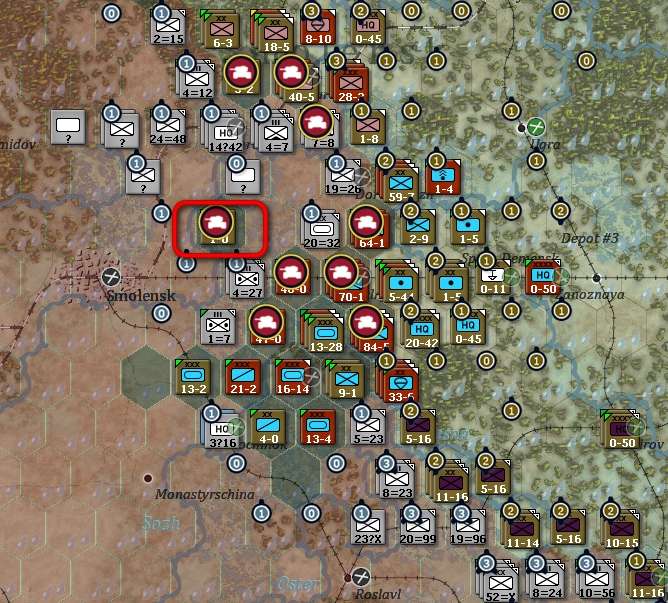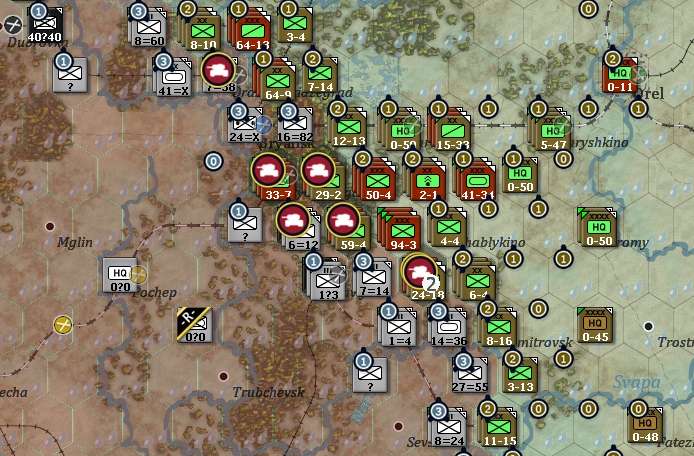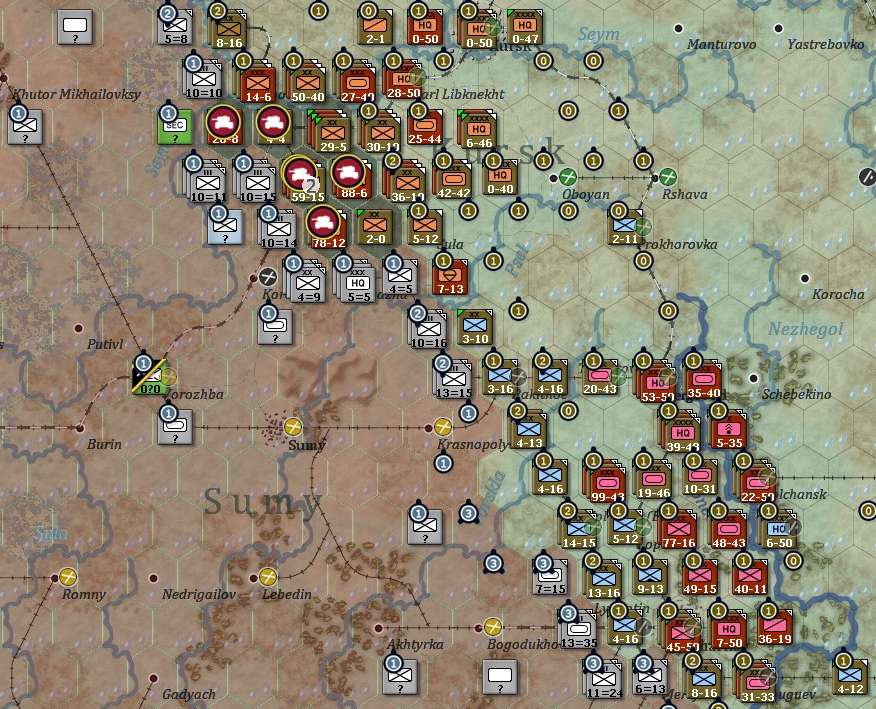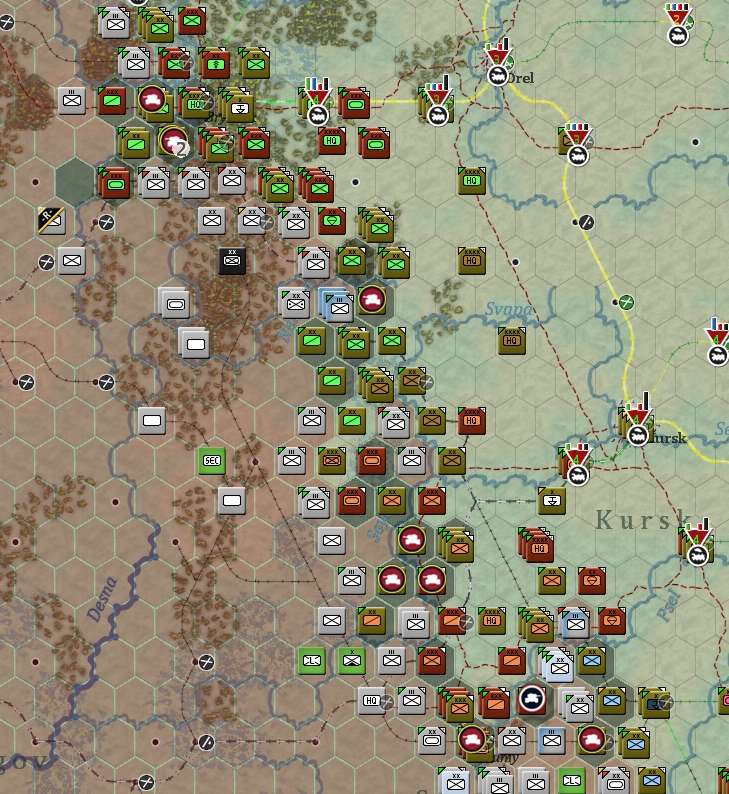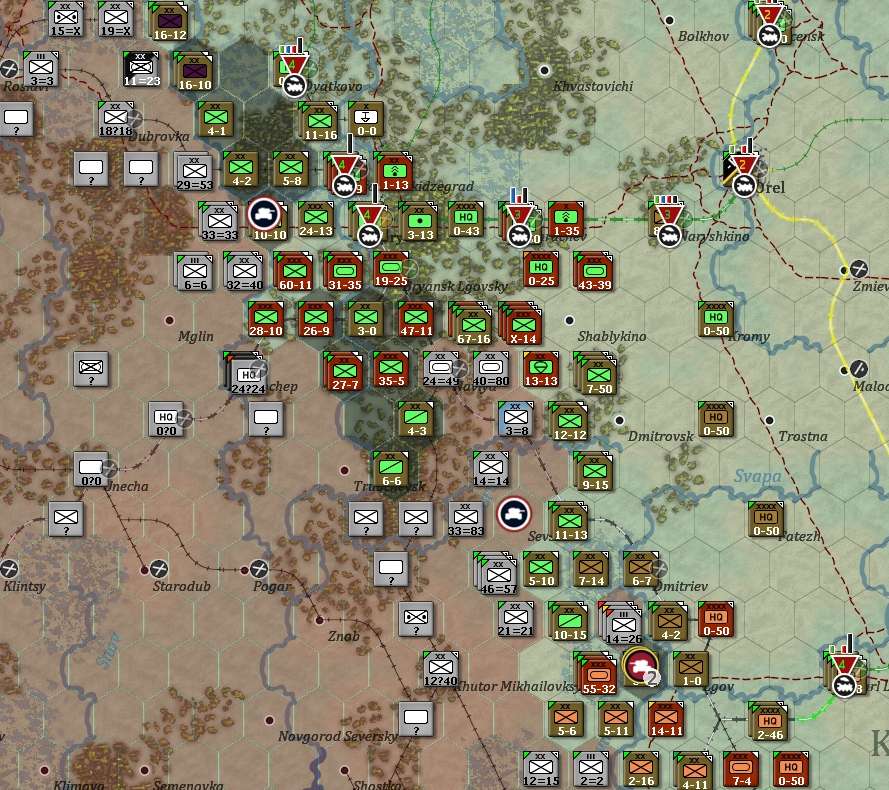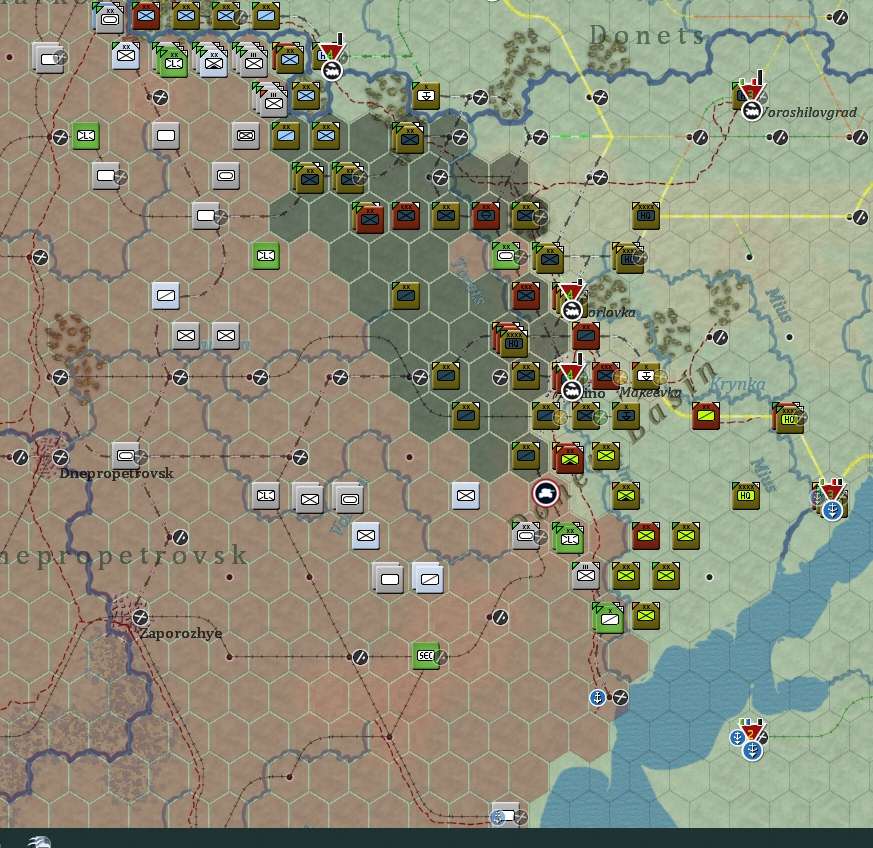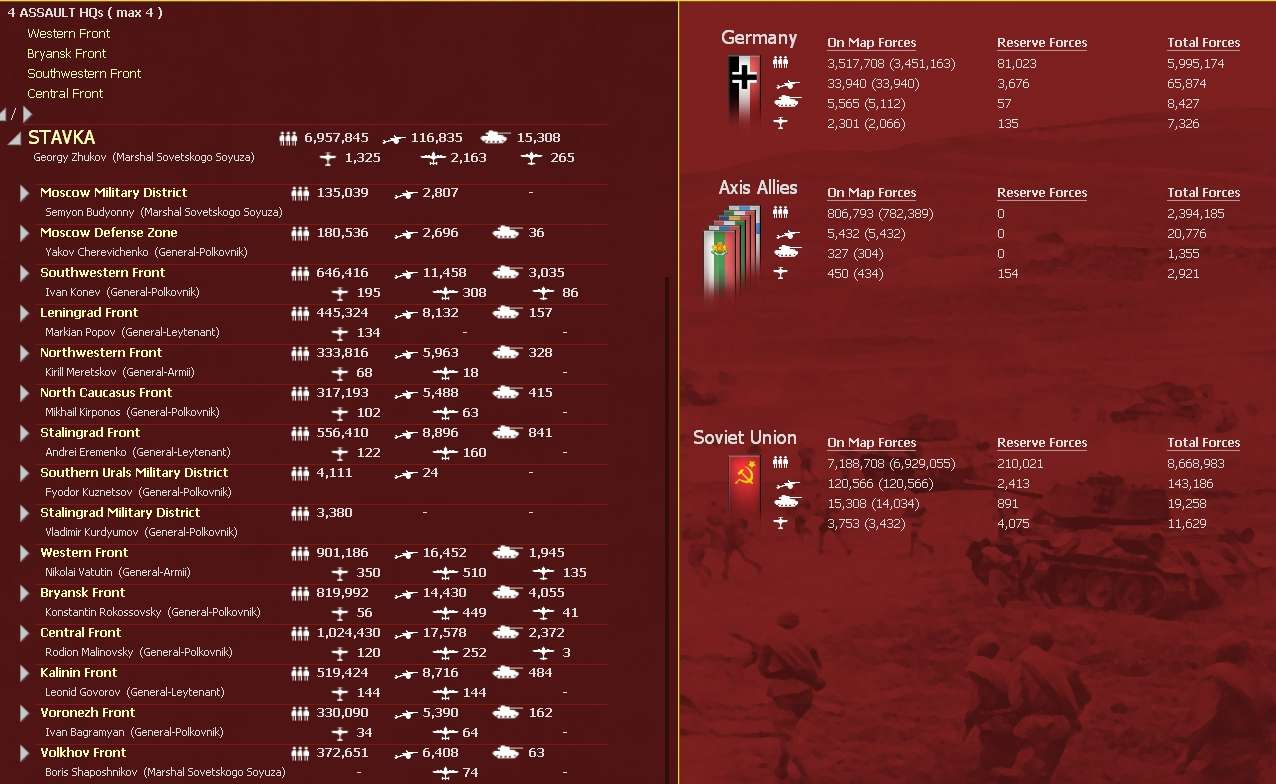The Air War
Decided to split this into a separate post as the original was becoming rather long.
Red Lancer has just discussed the game mechanics so again I'll focus on their applicatoin.
Best I can say for the air war is the VVS is doing what I need it to do. The issue is (as below) my losses are almost unsustainable both in pilots and modern planes. I only train 225 pilots a week so the reality is an air group takes heavy losses, picks up untrained pilots and needs to go to the reserve to train them. If I don't have trained pilots, a unit will replace its losses with untrained pilots.
Fortunately I have a bit of a conveyor belt system in place around this but I am short of almost 1,000 pilots compared to the notional capacity of my air units. So losing 500+ a week is not really helping me turn this corner.

I have a number of Gds air groups (76 at this stage) that have a +5 morale bonus that in turn feeds into better experience levels. The process of gaining Gds air formations is completely different to WiTE1.
Now this shows the new CR and some of its functionality. Those of you with WiTE1/WiTW will recognise the basics but it has been reworked from first principles and is far more flexible now. Here I have selected just Gds air groups that are on the map or in the reserve (I have a few in the Northern Theatre but I can't touch them).
Note how many are in the reserve (SR) as I train up the replacement pilots – most of the formations in the reserve have been given obsolete I-series fighters to train on (my losses of modern stuff outweighs my production at this stage).
Last small item, I have some FB formations trained as ground attack not fighter formations (Bmr not Ftr). Over time these will increasingly use the rather nice Yak-9T but for the moment most are using types that have a rocket load out and I'm using those for interdiction rather than GS (they take more losses than my Il-2s in that role as they are not so well armoured). The interdiction is handy not so much for affecting troop movements (this is not France in June 1944) but as a further niggle on the German supply network.
I am using the heavier bombers of the Long Range Air Command to hit major rail yards behind the German lines. They have to be important depots and by damaging the rail yard I reduce the capacity of the depot. This is probably of more use in 1941 and 1942 when the Germans are moving forward but its a useful mission, and I lack much else to hit with those types of bombers.
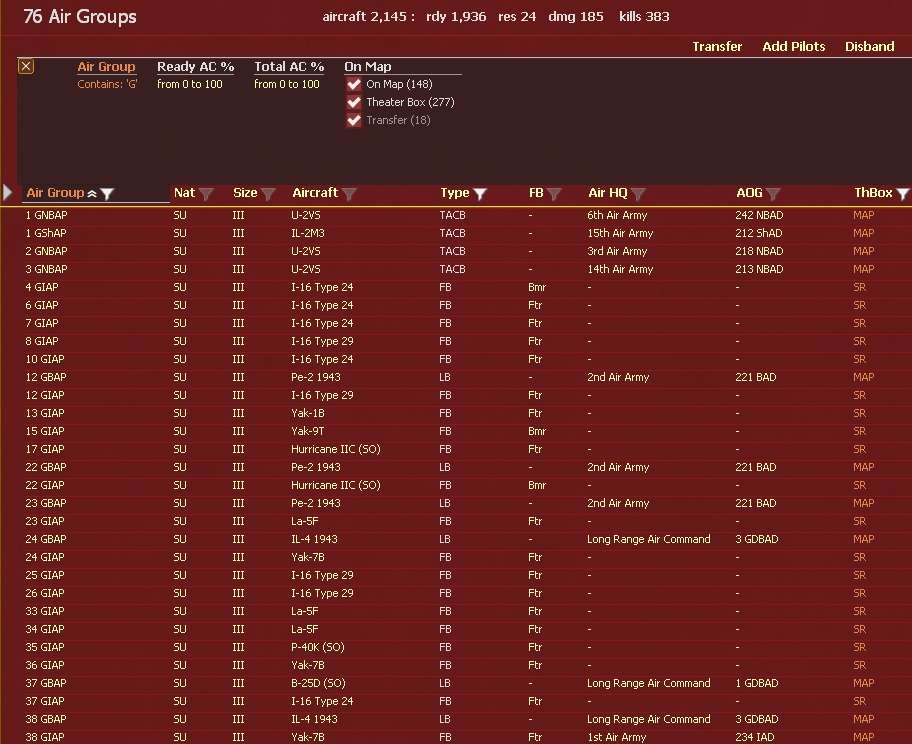
In an earlier post, some one asked how do I know if GS pays off. Lets take one battle as it shows a lot of the dynamics. First worth noting I wasn't taking chances so this isn't a marginal instance (later on I have wins where its clear it was the GS that tipped the scales).
So as in WiTE1/W you have the option to expand the summary battle report and we can see the Axis had 1124 ground elements at the start of the battle and my airpower destroyed/damaged/disrupted 125.
Worth noting that WiTE2 also has a rule where having GS bombers present causes some extra disruption over and above any direct hits. This reflects the confusion and loss of command and control caused by having enemy bombers flying over your formations. And, of course, is another reason to stick to GS, even when it appears you are losing really badly (such as the Soviet player in 1941).
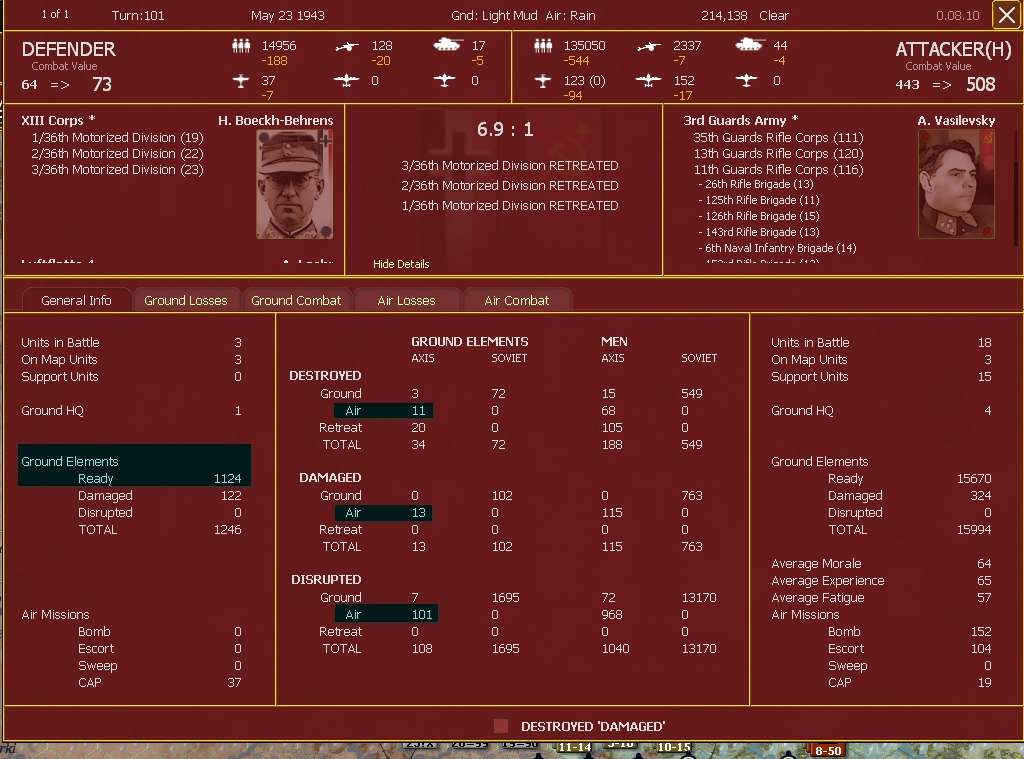
Remember the sequence of play here, GS is executed first and none of those elements will now take part in the rest of the battle (and of course do not count for determining who wins/losses).
So 10% sounds good, but I could have been bombing their catering corps? So if you want to know more, lets open the 'ground losses' tab. Those of you with WiTW will recognise this.
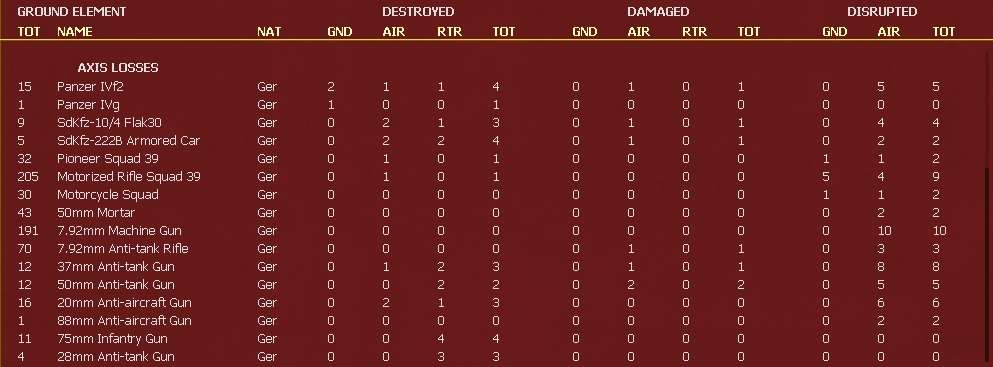

Well I did hit their catering corps but also things of much more value. The Germans didn't have many tanks and 7 of their Pzr IV are out of action already. My GS has also hit their artillery hard with 42 AT and artillery pieces out of action.
The artillery is particularly useful as the battle now proceeds in stages with the longer range stuff firing, then the final close assault. So those knocked out guns could have disrupted a lot of my infantry who instead reach the German positions in good order.
If you want to carry on poking around, look at the ground combat tab, this shows what German elements inflicted losses on me and at what range (and
vice-versa). But here, lets stick to the air war.
As is clear, my fighters paid a price and they were pretty much the most modern machines in the VVS. But no match for the Fw-190s.
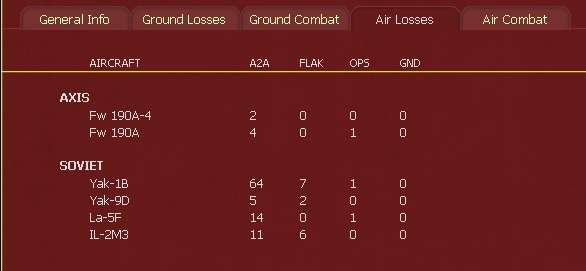
The final screen, if you are interested, breaks that down even more. The key variable is pilot skill – there is just no way at this stage of the war that I can match that.
As my losses start to come down (but not till 1944), I do start to have some very high skill formations as better planes, more wins and less LW interference allow me to build on my successes – at the moment a Soviet fighter pilot who wins an A2A interaction is probably only delaying their demise by a few weeks.
Also note the Soviet fighters are either in a close escort role to the Sturmoviks (escort) or have been called in as a form of CAP to engage directly with the German fighters (patrol). The patrol formations fly to the battle zone at a higher altitude which gives them a small advantage.

So, to go back to the question. That is how I know that GS is worth it, but equally that I am paying a high price. Those Soviet fighter formations will now have low morale and may even fill out with poor quality pilots – if they do that then they need to return to the reserve to train (the AI-assist routines will do this for you automatically). Fortunately I have their replacements already flying into the local airbases for next turn.
